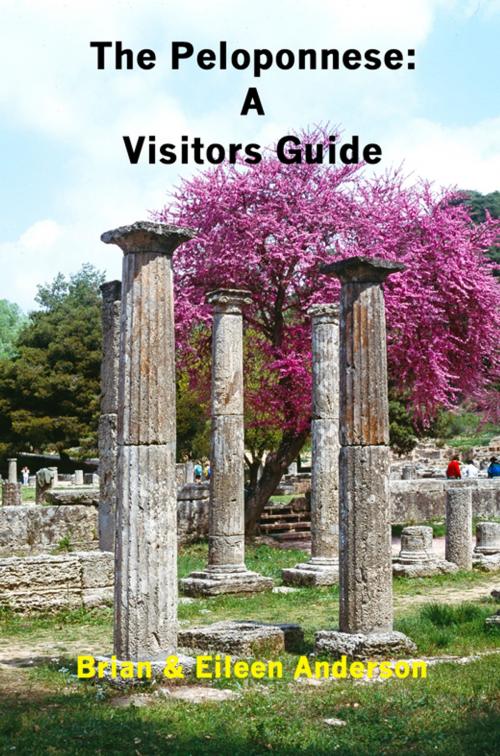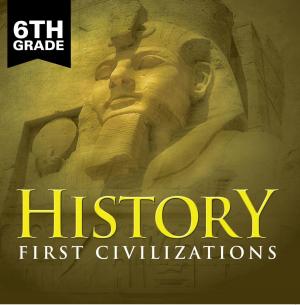| Author: | Brian Anderson, Eileen Anderson | ISBN: | 1230000007694 |
| Publisher: | Traveltrendz | Publication: | July 21, 2012 |
| Imprint: | Language: | English |
| Author: | Brian Anderson, Eileen Anderson |
| ISBN: | 1230000007694 |
| Publisher: | Traveltrendz |
| Publication: | July 21, 2012 |
| Imprint: | |
| Language: | English |
This southern part of the Greek mainland, the Peloponnese, has never attracted much attention as a tourist destination and yet it has so much to offer.
Greece is full of myths and legends. Every mountain, every rock, every stream and sometimes it seems, every tree is the subject of some folklore or myth. Nowhere is this truer than in the Peloponnese. It starts with the name: the Greek word Peloponnissos translates into Pelops' Island. Pelops, the son of the mythical Tantalus of Mycenae, was sacrificed by his father and served as a meal for the gods. On discovering this sacrilege the gods were not pleased and devised a suitable punishment for Tantalus. He was left hanging from a tree over water which he could not quite reach and near fruit which forever rustled out of reach on the slightest breeze. He was `tantalised' this way for an eternity. Pelops fared rather better. Restored to life by the gods he became consort to Zeus and eventually returned to earth as king of the Lydians and Phrygians. He fathered two sons, Atreus and Thyestes, who were rivals in the right to rule Mycenae.
Its central role in ancient history has left the region with a richness of historical sites second to none in their importance. Mycenae, Ancient Corinth, Epidaurus, Nestor’s Palace at Pylos, and Olympia are like honey pots to the present day tourists. As fascinating and evocative as these sites are, they are only part of the Peloponnese and there is so much more to discover. Two extraordinary Byzantine towns lie in wait; Mistra in ruins and Monemvasia. Add to this the castles of Nafplio, Methoni, and Koroni, the wild and rugged Mani dotted with tower houses, resorts of character and style like Nafplio and Pylos, the fascinating hill villages of Karitena and Andritsa, the steepest rack and pinion railway in Greece at Kalavrita, scores of monasteries, lush green valleys and gentle rolling forests and a more complete picture emerges of what lies in store.
This southern part of the Greek mainland, the Peloponnese, has never attracted much attention as a tourist destination and yet it has so much to offer.
Greece is full of myths and legends. Every mountain, every rock, every stream and sometimes it seems, every tree is the subject of some folklore or myth. Nowhere is this truer than in the Peloponnese. It starts with the name: the Greek word Peloponnissos translates into Pelops' Island. Pelops, the son of the mythical Tantalus of Mycenae, was sacrificed by his father and served as a meal for the gods. On discovering this sacrilege the gods were not pleased and devised a suitable punishment for Tantalus. He was left hanging from a tree over water which he could not quite reach and near fruit which forever rustled out of reach on the slightest breeze. He was `tantalised' this way for an eternity. Pelops fared rather better. Restored to life by the gods he became consort to Zeus and eventually returned to earth as king of the Lydians and Phrygians. He fathered two sons, Atreus and Thyestes, who were rivals in the right to rule Mycenae.
Its central role in ancient history has left the region with a richness of historical sites second to none in their importance. Mycenae, Ancient Corinth, Epidaurus, Nestor’s Palace at Pylos, and Olympia are like honey pots to the present day tourists. As fascinating and evocative as these sites are, they are only part of the Peloponnese and there is so much more to discover. Two extraordinary Byzantine towns lie in wait; Mistra in ruins and Monemvasia. Add to this the castles of Nafplio, Methoni, and Koroni, the wild and rugged Mani dotted with tower houses, resorts of character and style like Nafplio and Pylos, the fascinating hill villages of Karitena and Andritsa, the steepest rack and pinion railway in Greece at Kalavrita, scores of monasteries, lush green valleys and gentle rolling forests and a more complete picture emerges of what lies in store.















